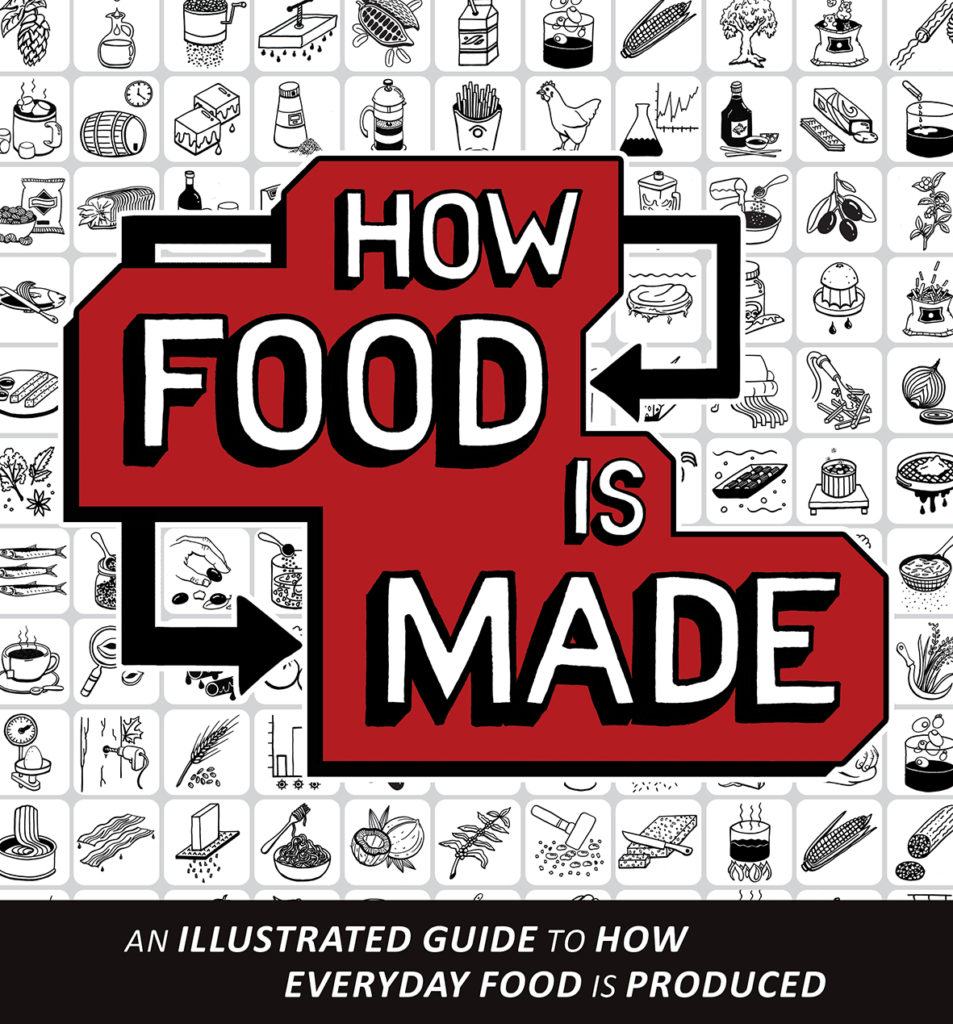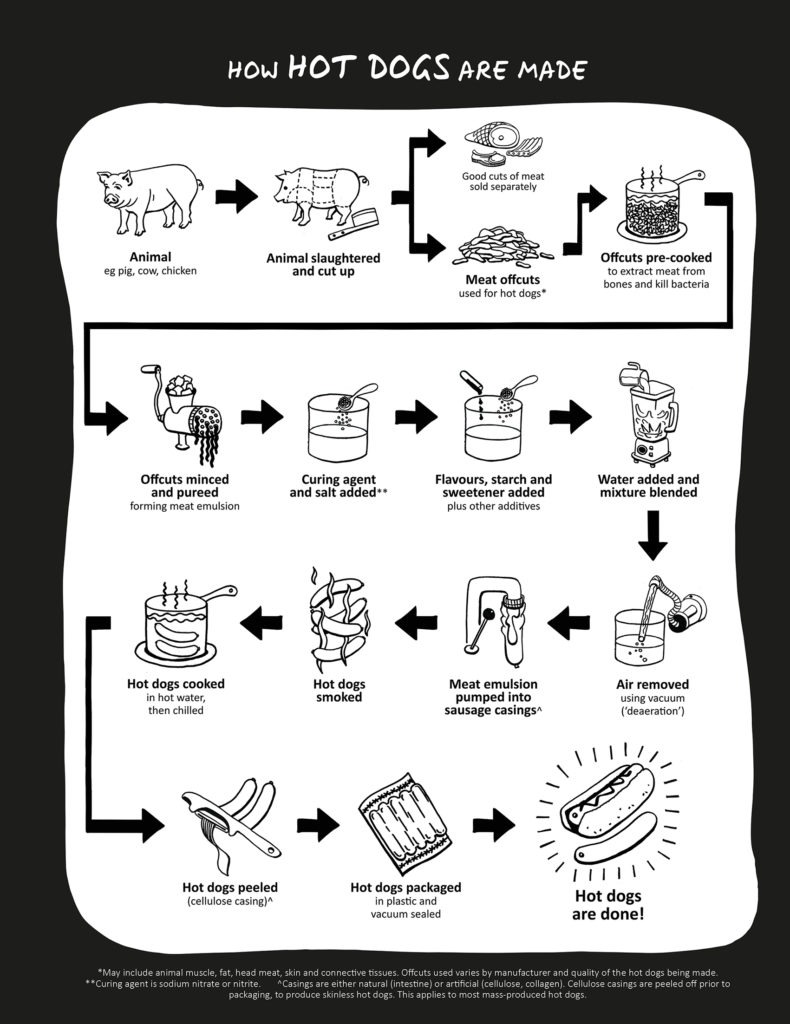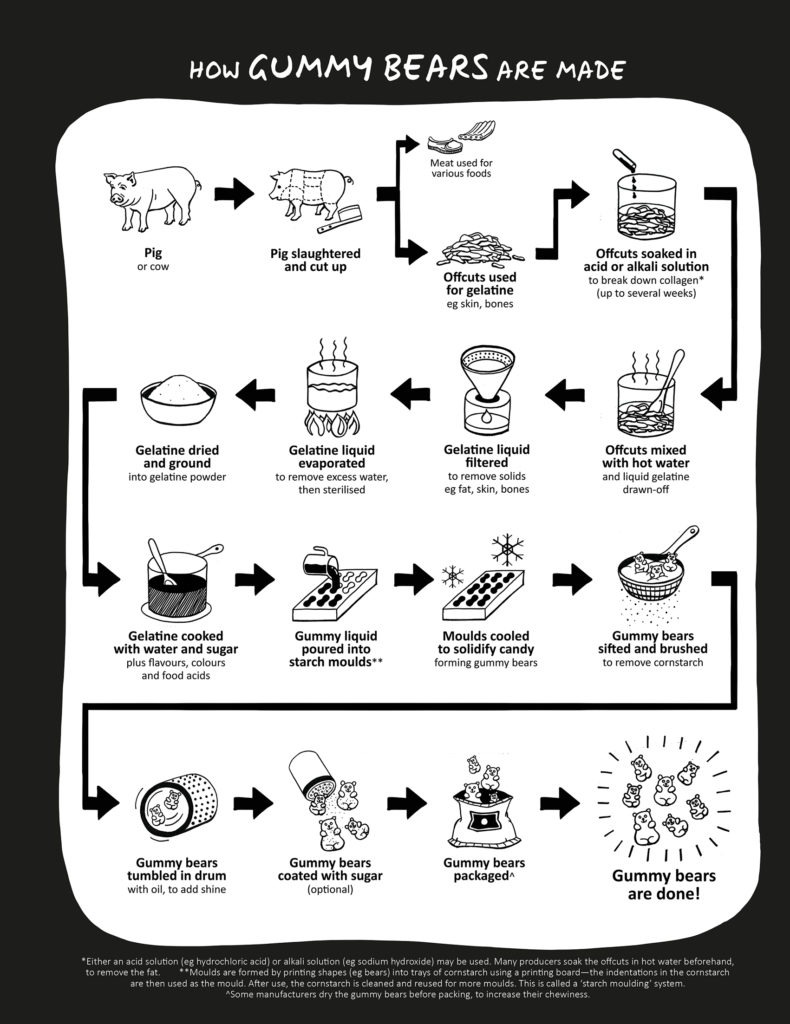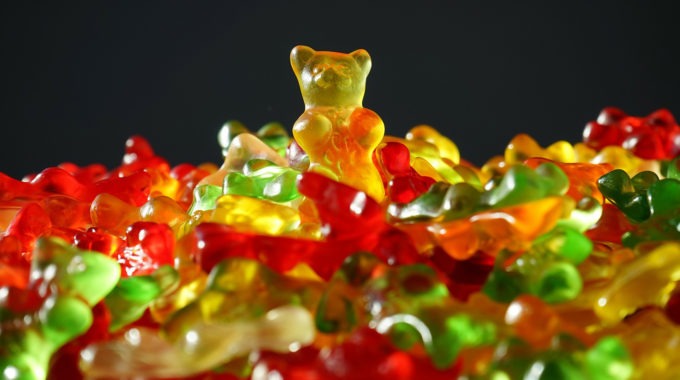How Food is Made: the bare facts
If you’ve ever found yourself staring at a hot dog, wondering what the hell is actually in it, we’ve found just the book for you. Australian illustrator and designer Ayla Marika has demystified how the most common processed foods are manufactured in her new work, How Food is Made: An Illustrated Guide To How Everyday Food Is Produced.
Researched and compiled over two years, How Food is Made answers the big questions about how food is created on an industrial scale. Using plain language and step-by-step infographics, the book guides you through the entire process of how factory-made foods like sugar, coffee and chocolate are concocted, from raw ingredients to final product.

From grains to gummy bears
The book includes chapters on grains and starches, condiments, meat products, dairy foods, spreads, plant proteins and drinks. Inspiration for the book came from Marika’s desire to educate her own daughter about food production. Marika says she felt it was important in a time when people feel disconnected from the origin of their food.
“With almost 1000 hand-drawn illustrations, I’ve covered 60 favourite foods,” she says. “It presents the bare facts without bias to allow readers the freedom to form their own ideas about the food they choose to buy and eat. My aim is to reduce the confusion caused by food advertising and empower people to think differently about food.”
To give you a taste of what you can find in the book, Marika has shared these extracts with Eativity. Read on, but trust us – you may never be able to eat another gummy bear again.
Making hot dogs
A hot dog is a processed pork and/or beef sausage. Offcuts used in hot dogs include skeletal muscle, head meat (eg, snout and tongue) and skin, as well as fat and connective tissues. The use of organs is not common, contrary to popular belief. Hot dogs usually contain pork and beef but may contain poultry or veal. Low-quality hot dogs often use mechanically separated chicken, also known as “white slime”.
The type of casing used varies. Natural casings made from animal intestine are the most traditional option, but also the least common. Artificial casings are made from either collagen or cellulose. Skinless hot dogs, which are the most common type, are made with cellulose casings that are peeled off before packing.

Making gummy bears
Gummy bears consist almost entirely of gelatine, water and sugar. The sugars used include sucrose and fructose, which act as sweeteners and preservatives. To prevent crystallisation, glucose is also added. Other additives include artificial or natural colours and flavours, artificial sweeteners, food acids, oil and glazing agents for gloss. Adding food acids such as fumaric or malic acid produces sour gummies.
To make gelatine, pig or cow offcuts containing collagen protein such as skin, bones and ligaments are treated with an acid (such as hydrochloric acid) or alkaline solution. When mixed with water, gelatine forms a gel that sets into a semi-solid when cool. Gelatine is tasteless, but it provides a chewy, bouncy texture.
Gummy candy made from real fruit juice is common, while versions containing multivitamins are a recent innovation. Vegan gummies that use carrageenan, pectin or starch instead of gelatine are also available. Other alternatives include Turkish Delight made from starch, and pectin-based jellies. Halal gummy bears contain cow gelatine.

How Food is Made is now available at online book retailers. You can find out more at howfoodismade.aylamarika.com









